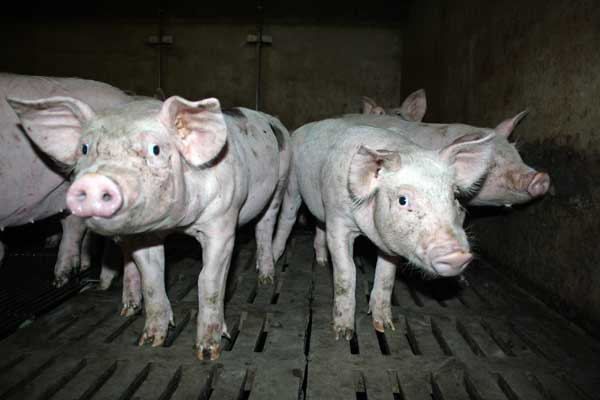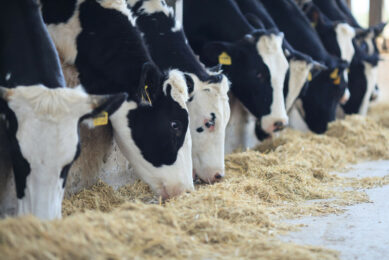Research: Effects of AGP in simple or complex diets

Could more complex feed formulations help to reduce or even eliminate the need for antibiotic growth promoters (AGP) in feed formulations? This was the aim of recent trials by Yanhong Liu and Hans H. Stein, University of Illinois, as the US Food and Drug Administration (FDA) announced that the number of AGP to be used by pigs will be reduced.
Six experimental diets for weanling pigs were formulated in each of the three phases.
- Phase 1 comprised days 0-11
- Phase 2 comprised days 11-25
- Phase 3 comprised days 25-39
In phase 1, the low complexity diet was based primarily on corn and soybean meal (SBM), with 3% plasma protein and 25% whey. The medium complexity diet was similar but also contained 5% fish meal, mostly at the expense of SBM. The high complexity diet contained no fish meal but contained 7.5% plasma and 10% lactose, mostly at the expense of corn. In phase 2, the whey concentration was decreased in all diets, while plasma was eliminated from the low and medium diets and reduced to 3% in the high diet. Lactose was removed from the high complexity diet in phase 2 as well. In phase 3, whey was removed from the low complexity diet and reduced to 5% of the medium and high complexity diets. Fish meal and plasma protein were removed from all diets in phase 3. For each diet in each phase, three additional diets were formulated by adding an antibiotic growth promoter (Pulmotil in phases 1 and 2 and Mecadox in phase 3) to the diet, resulting in 18 total diets.
A total of 294 weanling pigs with an average initial body weight of 6.32 kg were randomly allotted to the six dietary treatments. Pigs were weighed at the beginning of the experiment and at the conclusion of each phase. Daily feed allotments and orts were recorded and used to calculate average daily feed intake and gain:feed ratio.
Pigs fed the high complexity diet had a tendency toward increased body weight on day 11, and increased body weight on days 25 and 39 compared with pigs fed medium and low complexity diets. Pigs fed the high complexity diet also had greater average daily feed intake in all phases and overall than pigs fed the low complexity diet, as well as greater average daily gain in phase 1, phase 2, and overall. However, the gain:feed ratio in the pigs fed the high complexity diet was less in phase 2, phase 3, and overall than in pigs fed the low and medium complexity diets.
Pigs fed diets containing an antibiotic growth promoter had greater body weight at day 25 compared with pigs fed no antibiotics. Average daily feed intake was increased among pigs fed an antibiotic growth promoter in phase 2, phase 3, and overall. Average daily gain was also greater in phase 2 for pigs fed the antibiotic growth promoter. In phase 3 and the overall experimental period, the gain:feed ratio was decreased in pigs fed an antibiotic growth promoter.
Some key points
- The high complexity diet increased feed intake in weanling pigs, which resulted in greater gain. However, feed efficiency was decreased in pigs fed a high complexity diet
- Adding an antibiotic growth promoter to diets of any level of complexity increased feed intake and increased gain in phase 2. However, in this experiment, the antibiotic growth promoter had no effect on overall gain, and adding antibiotics decreased feed efficiency.
- Addition of the antibiotic growth promoter to diets used in this experiment resulted in less improvement in pig growth performance compared with observations from previous experiments. The pigs used in the present research had an excellent health status, which may be the reason for this observation.











